Small plants steal the spotlight in indoor greenery, turning even the tiniest corners into lush, vibrant havens. Join us as we explore the charm of popular small indoor plants that effortlessly blend beauty with space efficiency. From low-maintenance succulents to chic air-purifying companions, our blog introduces you to the green wonders that promise to elevate your indoor gardening experience. Discover the allure of these small-scale marvels and learn how they can breathe life into your home, one compact leaf at a time. Let’s dive into the world of petite green paradises together!
What are the best small indoor plants?
If you harbor any uncertainty about your ability to nurture all types of plants successfully, it’s prudent to begin with a selection of dependable, low-maintenance plants. Starting with these tried-and-true varieties can be an excellent introduction to plant care. Numerous plants have gained a reputation as foolproof performers when cultivated in pots, and we’ve curated a list of our preferred choices in this category.
ZZ Plant
The ZZ Plant stands out as one of the most resilient plants, making it exceptionally forgiving for those who may unintentionally neglect their green companions. Thanks to its water-storing capabilities, the ZZ Plant can thrive with infrequent watering, requiring attention only once or twice a month.

Notably adaptable, it flourishes in low-light settings, making it an ideal choice for spaces with limited natural light. Beyond its hardiness, the ZZ Plant contributes to air purification, adding functionality to its aesthetically pleasing appearance.
Snake Plant
Snake plants exhibit extensive appearances and color variations, each resembling a unique piece of modern art. Most varieties feature patterns reminiscent of snakeskin, adding an artistic touch to their aesthetic appeal.

These plants demonstrate versatility by thriving in various lighting conditions, making them suitable for indoor environments. Notably, snake plants stand out as highly efficient air purifiers, enhancing their value as ornamental additions and contributing to a healthier indoor atmosphere.
Golden Pothos
For those with a history of unintentionally causing harm to plants, the Golden Pothos emerges as a resilient hanging plant that can withstand even the most neglectful care. Despite its initially modest size, the pothos surprises with vines that extend several feet, displaying remarkable growth.

This plant can climb various surfaces, thriving in environments with limited light and infrequent watering. The unassuming appearance of the Golden Pothos belies its robust nature, making it an excellent choice for individuals seeking a low-maintenance yet visually rewarding addition to their indoor greenery.
Aloe Vera is one of the popular small indoor plants
Aloe vera, not only a low-maintenance plant but also renowned for its healing properties, contains juice with notable anti-inflammatory and anti-bacterial attributes. Placing aloe vera plants in a sunny location requires minimal ongoing care, making them an easy addition to indoor greenery.

While you may overlook their needs, aloe vera plants effortlessly persist in purifying the air in your surroundings, adding benefit to their presence.
Chinese Money Plant
Regarded as one of the most beginner-friendly indoor plants, the Guiana Chestnut, also known as the Money Tree, originates from tropical regions and thrives in consistently moist soil. Your primary, if not sole, responsibility revolves around maintaining a well-draining planter where the plant remains in contact with water most of the time.
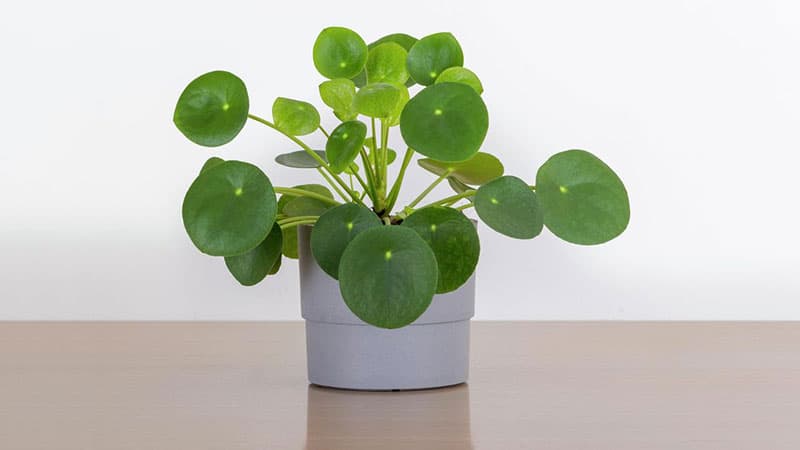
Ensuring proper moisture levels in the soil stands out as the key factor in caring for this plant, making it an uncomplicated yet rewarding addition to your indoor greenery.
Peperomia
Peperomia, affectionately dubbed the “baby rubber plant,” hails from the regions of Florida, Mexico, and the Caribbean. The charm of this flowering plant lies in its extensive variety, offering a diverse array of appearances even if you choose to cultivate multiple specimens. Renowned for its ease of care, peperomias thrive with minimal effort, requiring watering only when the top layer of soil becomes dry.

They flourish in bright, indirect sunlight, adding to their adaptability to various indoor settings. The wealth of peperomia varieties ensure a delightful and visually dynamic collection for plant enthusiasts, each with unique characteristics. Understanding these care tips enhances the success of cultivating and enjoying the diverse Peperomia family.
Spider Plant
The name “spider plant” is derived from the spider-like plantlets that gracefully dangle from the mother plant in a hanging basket, showcasing the cascading beauty of their foliage. This houseplant exhibits a forgiving nature, allowing room for occasional forgetfulness in its care routine.

Like snake plants, the spider plant is self-propagating and air-purifying and possesses a petite and aesthetically pleasing appearance. It thrives seamlessly in various light conditions, from low to bright indirect light, making it an excellent choice for novice plant enthusiasts or those lacking a green thumb.
Jade Plant
The miniature variegated jade plant will surely capture your attention if you have a penchant for captivating succulents. This succulent variety is visually striking and boasts a sculptural and alluring appearance, characterized by fleshy, oval-shaped leaves and thick, woody stems resembling miniature tree trunks.

Specifically cultivated for indoor environments, the jade plant proves to be relatively low-maintenance. It thrives in well-lit areas, making windowsills an ideal location, and can tolerate direct sunlight. Like many succulents, the jade plant exhibits prolific propagation, making it a resilient and visually appealing addition to your indoor greenery.
Small indoor plants: Paddle Plant
Originating from South Africa, the Paddle Plant, also known as “Flapjack,” is a distinctive succulent with an unconventional appearance. Its flat, broad, spoon-shaped jade green leaves exhibit a subtle red blushing. This evergreen succulent has gained popularity as an easy-to-care-for indoor plant, thriving with minimal effort.

It primarily requires abundant sunlight and well-drained, dry soil to flourish. Interestingly, maintaining low humidity enhances its paddle-shaped leaves’ distinct characteristics. Versatile in its adaptability, the Paddle Plant is suitable for indoor and outdoor settings.
String of Pearls Plant
If you haven’t yet succumbed to the allure of succulents, the String of Pearls Plant is poised to capture your attention. This captivating specimen elegantly cascades over the edges of containers or hanging baskets, creating the visual effect of a beaded necklace.

Its distinct charm lies in the fleshy green, pea-like foliage, making it an ideal choice for hanging or bowl planters.
Air Plant
Air plants stand out for their remarkable resilience, lacking traditional roots and absorbing nutrients through their spiky leaves. This unique characteristic makes them ideal for individuals who frequently overlook watering their plants or prefer to avoid dealing with soil-related concerns. Whether mounted on driftwood, arranged in a basket, or featured in a soil-free mini terrarium, air plants offer a mess-free and versatile option for creative displays.

These low-maintenance plants exhibit slow growth and require minimal care beyond partial sunlight and a weekly soaking in water to stay adequately hydrated. Their adaptability and forgiveness make them a perfect addition to any indoor plant collection, especially for those with time constraints or a tendency to forget regular plant care routines.
Peace Lily
Referred to as the Closet plant for its capacity to thrive in low-light environments, peace lilies emerge as exquisite flowering plants and stand among the finest choices for indoor greenery – an ideal gift for friends with less-than-green thumbs. The lush, veined leaves of the peace lily not only contribute to its visual appeal but also make it a stunning addition to any living space.
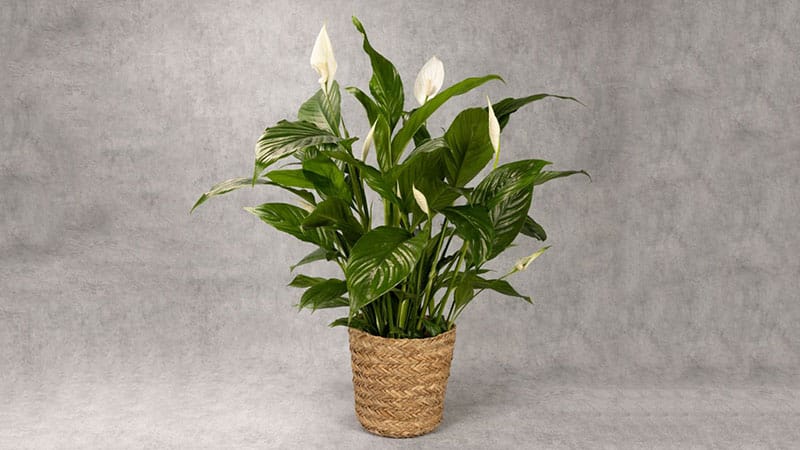
To witness clusters of blooming marvels, providing peace lilies with bright, indirect light is crucial. Additionally, they prefer filtered water and well-drained soil to maintain their health and vitality. These considerations ensure that peace lilies flourish as resilient and aesthetically pleasing members of your indoor plant collection.
Zebra Plant
Renowned for its striking appearance, the zebra houseplant is characterized by large, glossy leaves adorned with deep green hues intricately veined in either white or yellow, resembling the distinctive stripes of a zebra – a nomenclature inspired by this visual similarity. Adding to its allure, the plant produces brightly colored flowers and bracts, creating a visually stunning display.

Typically, these plants are relatively compact when purchased, and some indoor gardeners may perceive them as short-lived companions. To ensure the longevity and vibrancy of your zebra plant, it thrives in high humidity conditions, and maintaining consistently moist soil is key to its well-being. Understanding and addressing these specific care requirements contribute to the zebra plant’s health and make it an enduring, eye-catching feature in indoor greenery.
Prayer Plant
Displaying a captivating behavior of folding its leaves in the evening, reminiscent of hands in prayer, the Prayer plant stands out as a fascinating indoor gem, ideal for adorning window sills, mantles, or shelves needing a vibrant touch. Its distinctive foliage showcases soft, deep green leaves adorned with painterly-like centers of light green and red veins, creating a visually appealing spectacle.

The Prayer plant proves to be an uncomplicated houseplant, thriving with minimal effort. To ensure its flourishing state, position it in a sunny spot, maintain dry soil conditions, and regularly mist its leaves once a week. Understanding and adhering to these simple care instructions contribute to the longevity and vibrancy of this unique indoor plant, making it a perfect addition to your home decor.
Bird’s Nest Fern
These lush green wonders belong to the epiphytic species, signifying their natural inclination to attach themselves to other trees for moisture and nutrients. Originating from tropical regions, these plants flourish in environments with elevated humidity. While providing bright, indirect light is ideal for their well-being, they can also tolerate moderate winter sun.
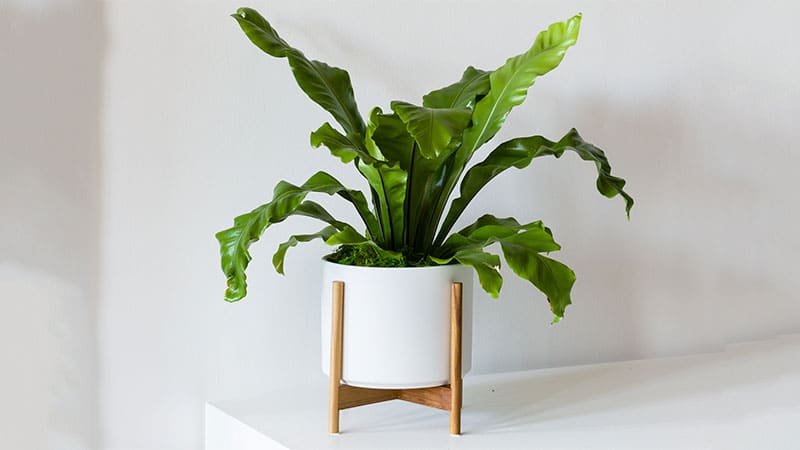
In contrast to other tropical plants, it is advisable to refrain from misting, as it may lead to fungal infections on the leaves. Instead, consider placing the plant on a tray filled with water and pebbles, creating a humid microenvironment that supports its thriving growth. Understanding these specific care requirements contributes to these epiphytic species’ overall health and vibrancy in your indoor greenery.
Nerve Plant
Regarded as one of the top choices for houseplants, the Nerve plant demands minimal attention and exhibits a forgiving nature if its watering schedule is occasionally overlooked. Originating from Peru, these plants earned their nickname from the vibrant red, white, or pink veins that intricately run through their leaves.

While in their natural habitat, nerve plants flourish as ground cover; indoors, they transform into striking houseplants, adding a touch of visual allure to your living space. Understanding their origin and the distinctive foliage characteristics enhances your ability to nurture and appreciate these resilient and captivating indoor companions.
Buddha Palm Plant
Belonging to the Elephant Ear family, the plant commonly referred to as Buddha’s Palm stands out as one of the sturdier varieties within the Alocasias. Characterized by elegant, slender stems and heart-shaped foliage, it has earned its nickname due to the belief that, in a gentle breeze, its leaves resemble Buddha’s hands, symbolically waving good luck to those passing by. Maintaining the well-being of this plant involves regular watering with an emphasis on allowing the soil to dry between sessions.

Buddha’s Palm thrives in consistently moist conditions and exhibits intolerance towards drought. Understanding these specific care needs not only ensures the health and vitality of the plant but also adds depth to the appreciation of its unique characteristics and cultural symbolism.
Boston Fern
The Boston fern brings a uniquely wild yet beautiful character to your indoor garden, featuring an extravagant and lush appearance akin to a voluminous ‘do, reminiscent of Sideshow Bob on steroids. This particular plant thrives in a humid environment, appreciating consistently moist soil. Regular check-ins to ensure soil moisture and maintaining high humidity levels, often achieved through misting, are key to its well-being.

The bathroom is an ideal location for the Boston fern, where the naturally higher humidity levels provide an optimal environment. While this houseplant tolerates low light conditions, it flourishes in bright, indirect sunlight. Notably, the Boston fern stands out as a pet-friendly choice, being non-toxic to furry companions, endearing it to plant enthusiasts with pets. Understanding and catering to these requirements enhances the success and enjoyment of having the Boston fern as a vibrant part of your indoor greenery.
Fiddle Leaf Fig
Considered the supermodel of the indoor plant world, the elegant Fiddle Leaf Fig continues to captivate enthusiasts with its enduring popularity. Its voluptuous, fiddle-shaped leaves add a touch of splendor to any space. With a preference for high light, this plant thrives in natural light but should be shielded from direct sunlight.

Maintaining its well-being involves providing a thorough soaking approximately once a week until water trickles out of the drainage holes. Ensuring that the top few centimeters of soil have dried out before the next watering session is crucial for its optimal growth and health. Understanding and adhering to these specific care guidelines contribute to the Fiddle Leaf Fig’s success as a stunning and cherished indoor plant.
Cast Iron Plant
Earning its name, the cast-iron plant stands out as a remarkably hardy species that can withstand neglect and low light conditions, thriving even in areas with minimal illumination. Its robust nature extends to the ability to grow in near-darkness. This challenging environment could prove fatal for many other plants. Characterized by broad, strappy leaves on long stalks, these plants grow in clumps, making them ideal for layering among other plants to create a lush and textured garden setting.

The cast-iron plant’s appeal lies in its low-maintenance requirements, allowing for a hands-off approach to caring for this resilient species. Its ability to endure neglect and thrive in less-than-ideal conditions makes it an excellent choice for those seeking a hardy and undemanding addition to their indoor or outdoor plant collection. Understanding and appreciating the specific features contributing to its hardiness enhances the overall experience of cultivating the cast-iron plant.
Creeping Fig
Belonging to the Mulberry family, this charming creeper hails from East Asia. While it is often observed gracefully scaling the exterior walls of historic mansions, this plant also thrives indoors when allowed to elegantly trail downward from a hanging pot or shelf.

The striking variegation on its foliage adds a touch of flair and uniqueness to your plant collection, making it a noteworthy and visually appealing addition. Understanding its origin and preferred growth habits enhances the experience of cultivating this delightful creeper, whether as an indoor or outdoor plant.
Alocasia Black Velvet
Among the more petite Alocasias, this charming dark beauty stands out with its velvety leaves adorned with silvery veins as one of the rare plants boasting near-black coloring; its dark and moody foliage introduces a touch of sophistication to any plant collection.

While it may pose a slightly greater challenge in terms of care compared to some smaller indoor plants, providing this unique beauty with proper attention and care will yield the reward of stunning foliage year after year. Understanding its specific needs and appreciating its distinctive features enhances the gratification of cultivating and nurturing this special Alocasia.
Venus flytrap
Venus flytrap plants are occasionally marketed as novelty plants, especially appealing to children. However, with attentive care, they prove to be excellent small houseplants. The unique leaves of Dionaea muscipula, featuring teeth-like raspy edges, possess trigger hairs that respond to touch, snapping shut on prey insects—such as bothersome fruit flies—one might be aiming to eliminate.

Despite their charm, these quirky plants come with equally distinctive growing requirements. Flourishing in a peat moss growing medium, they exhibit sensitivity to minerals, necessitating the use of distilled water for optimal health. Providing bright light and maintaining cool winter temperatures are additional factors crucial for ensuring the longevity and well-being of your Venus flytrap. Understanding and adhering to these specific care details enhances the success of cultivating these intriguing and carnivorous houseplants.
African violets
African violets (Saintpaulia), once the favored plants of your grandparents, are experiencing a resurgence, possibly fueled by the introduction of new and unconventional varieties featuring ruffled or picotee blooms and variegated foliage.
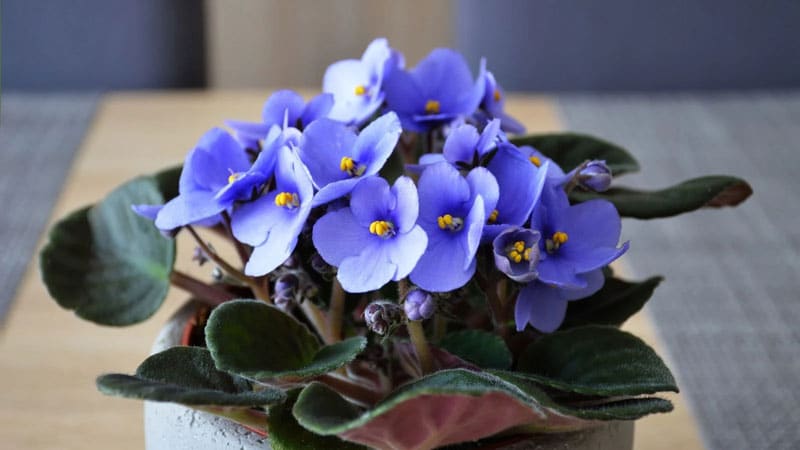
Despite evolving trends, African violets’ compact size and prolific blooming nature remain consistent. These plants thrive in small pots, a factor that stimulates continuous blooming. To ensure optimal performance, maintain consistent moisture levels, keep them pot-bound, provide bright light, and regularly feed them with a balanced flower fertilizer throughout the year. The enduring appeal of African violets continues, with contemporary variations adding a touch of fun and flair to this classic houseplant.
Polka Dot Plant
The polka dot plant derives its name from the distinctive polka dot patterns adorning its leaves. The vivid white dots contrast against the lush green backdrop, rendering this plant a captivating beauty suitable for various placements. These unique speckles can exhibit shades of pink, red, yellow, or lighter green, adding to the plant’s visual charm. Whether grown in a small pot or within a terrarium setting, the polka dot plant adapts well to compact spaces.

To ensure optimal growth, this plant thrives in environments with high humidity. If the air tends to be dry, regular misting is essential to maintain the desired moisture levels for the polka dot plant. Understanding these specific preferences contributes to the successful cultivation and vibrant appearance of this striking foliage.
Cacti
The diverse world of cacti offers a multitude of types and varieties that seamlessly integrate into small plant setups. Not only are they low-maintenance, making them exceptionally easy to care for, but they also fall into the set-it-and-forget-it category of plants. A notable feature is their generally slow growth, allowing them to remain compact and well-suited for small pots over extended periods.

Cacti exhibit versatility in tolerating various lighting levels, making them adaptable to different indoor environments. However, it’s crucial to exercise caution when it comes to watering. Overwatering stands as the primary reason behind the demise of many cacti, emphasizing the importance of a restrained watering approach. Understanding the specific needs and characteristics of different cactus varieties enhances their successful cultivation and ensures their longevity in smaller plant arrangements.
Moth orchid
Orchids prove to be excellent choices for small spaces, effortlessly enhancing the ambiance on a bedside table or adorning a bathroom counter. Moth orchids, known for their stunning aesthetics, boast blooms that endure for months, making them a delightful addition to compact settings.
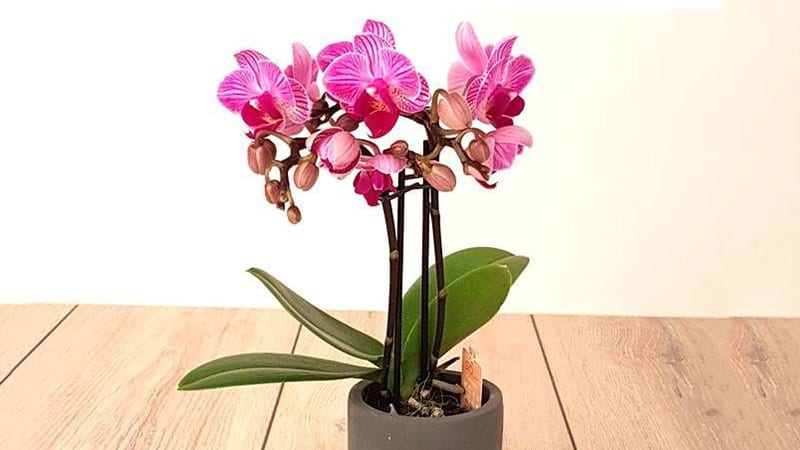
Contrary to their delicate appearance, orchids, especially moth orchids, are surprisingly easy to care for. A fundamental guideline is to avoid overwatering while periodically diluting fertilizer and applying it every few weeks. Optimal results are achieved by maintaining the orchid in well-draining orchid soil, ensuring proper aeration for the roots. These considerations contribute to the successful cultivation of orchids, elevating their visual appeal in confined spaces.
Pilea & Mini Pilea
Pilea has surged in popularity as a sought-after houseplant, owing to its distinctive and intriguing appearance, coupled with its ease of propagation.

Typically maintaining a petite stature, with a maximum height of 30-40 centimeters, Pilea exhibits impressive longevity, capable of thriving for ten years or more. For those seeking an even more diminutive plant, the mini Pilea variety remains compact and perfectly suited for occupying small nooks within your home. This adaptability, along with its charming aesthetics, solidifies Pilea as a beloved choice for plant enthusiasts looking to add character and greenery to their indoor spaces. Understanding the unique features of Pilea contributes to the successful cultivation of this captivating houseplant.
Kalanchoe & Mini Kalanchoe
Kalanchoes, sought-after succulent houseplants, are renowned for their vibrant and enduring blooms. These plants exhibit a compact growth habit, making them an ideal choice for adorning side tables or windowsills with their charming presence. Not only are they visually appealing, but they are also straightforward to cultivate, rendering them suitable for both novice and experienced plant enthusiasts.

Moreover, Kalanchoes are readily available and come in an extensive array of colors, including but not limited to yellow, pink, magenta, orange, and red. This diversity allows individuals to select varieties that seamlessly integrate with their preferred color schemes, enhancing the aesthetic appeal of their indoor spaces. Understanding the easy care and diverse color options makes Kalanchoe an excellent addition to any plant collection.
Small indoor plant: English ivy
English Ivy (Hedera helix) is a versatile and classic choice for indoor greenery, celebrated for its trailing vines and lush green leaves. This evergreen plant adds a touch of elegance to any space, whether cascading from hanging baskets or climbing along shelves. English Ivy is well-suited for both beginners and experienced plant enthusiasts, thriving in a range of light conditions from bright indirect light to partial shade.

When it comes to care, this resilient plant prefers consistently moist soil, but it’s crucial to avoid overwatering, ensuring the top inch of the soil dries out between waterings. Regular pruning helps maintain its compact shape and promotes bushier growth. With its air-purifying qualities and adaptable nature, English Ivy is an excellent choice for those looking to bring classic and timeless beauty into their indoor environments.
How do I keep indoor plants small?
Indoor plants contribute vibrant colors to your living space, yet certain varieties may rapidly outgrow their allocated room. Thoughtful pruning becomes essential in managing the size of these plants to suit the constraints of smaller spaces, effectively halting or slowing their upward growth.

Beyond size control, annual pruning has the added benefit of encouraging increased foliage and flower bud production, enhancing the overall attractiveness of the houseplant. The pruning process involves selectively trimming roots, stems, and leaves based on your specific goals, whether it’s controlling size, promoting bushier growth, or encouraging more prolific flowering. Understanding the nuances of pruning techniques allows for a tailored approach, ensuring the continued health and aesthetic appeal of your indoor plants.
Final thoughts
As we wrap up our exploration of these popular small indoor plants, one thing becomes abundantly clear – size does not diminish the impact of greenery in our homes. These compact wonders not only bring nature indoors but also effortlessly enhance the aesthetics of any space.
Whether you opt for resilient succulents, air-purifying snake plants, or charming peace lilies, small indoor plants have its unique way of transforming your surroundings. Their ability to thrive in limited spaces makes them perfect companions for urban dwellers or anyone seeking a touch of nature in cozy corners.
Embrace the beauty of these small-scale marvels, and watch as they infuse your home with life, tranquility, and a refreshing burst of green elegance. Happy planting!

